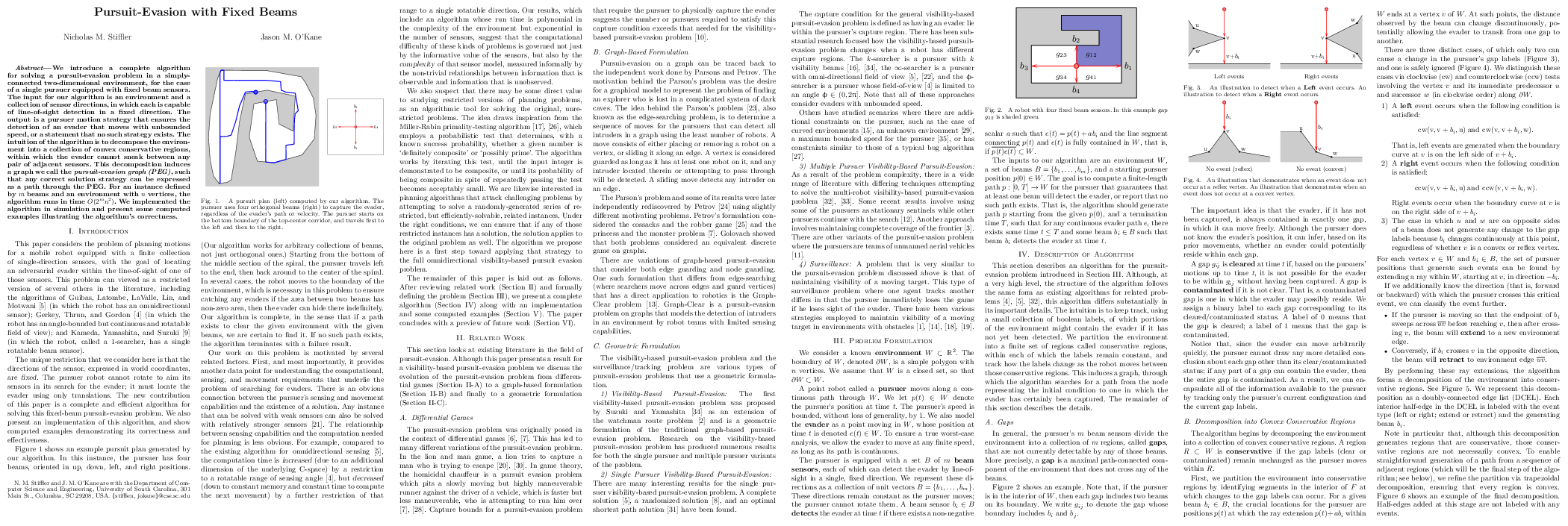 Nicholas M. Stiffler and Jason M. O'Kane
Nicholas M. Stiffler and Jason M. O'KaneAbstract We introduce a complete algorithm for solving a pursuit-evasion problem in a simply-connected two-dimensional environment, for the case of a single pursuer equipped with fixed beam sensors. The input for our algorithm is an environment and a collection of sensor directions, in which each is capable of line-of-sight detection in a fixed direction. The output is a pursuer motion strategy that ensures the detection of an evader that moves with unbounded speed, or a statement that no such such strategy exists. The intuition of the algorithm is to decompose the environment into a collection of convex conservative regions, within which the evader cannot sneak between any pair of adjacent sensors. This decomposition induces a graph we call the pursuit-evasion graph (PEG), such that any correct solution strategy can be expressed as a path through the PEG. We have implemented the algorithm and present some computed examples illustrating the algorithm's correctness.
@inproceedings{StiOKa16,
author = {Nicholas M. Stiffler and Jason M. O'Kane},
booktitle = {Proc. IEEE International Conference on Robotics and
Automation},
title = {Pursuit-evasion with fixed beams},
year = {2016}
}
